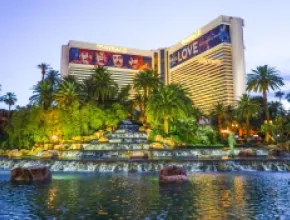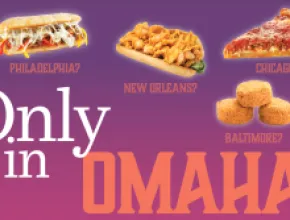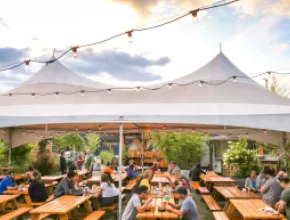Minnesota has one of America’s healthiest populations, partly because it has one of America’s most-outdoorsy populations. And with the state’s 11,842 lakes, 800 resorts, 75 state parks, 4,000 miles of paved bike trails and over 500 golf courses, outdoor adventure is never far away, says John Edman, director of Explore Minnesota Tourism.
“And that lends itself to great meeting opportunities,” he says. “The bottom line is that Minnesota is known for its natural resources and its lakes and rivers, and we have numerous opportunities to allow delegates to connect.”
Northern Minnesota
Julie Johnson Atkinson, senior sales manager at Visit Duluth, recommends a slate of outdoor activities that visitors can easily accomplish because the city is fronted by Lake Superior and backed by hills that feature an extensive trail system.
“There are many possibilities to enjoy the outdoors here—whitewater rafting, kayaking, chartered fishing, paddleboarding, biking, hiking, golf and disc golf—all within the city limits.”
Other activities include rides on the North Shore Scenic Railroad or sightseeing and dinner cruises on a Vista Fleet boat. Nearby Spirit Mountain hosts skiing and snowboarding in the winter and amusement-park rides and mountain biking during the summer (try the Timber Twister roller coaster).
Northwest of Duluth, Grand Rapids is at the highest easily navigable point on the Mississippi River and as such was once a major shipment point for Minnesota logs headed downstream toward population centers. Today, the Forest History Center leverages that past for groups’ benefit; it offers tours of a 1900s-era logging camp and meals in a floating “cook shack” along with environmental and forestry education programs, draft-horse demonstrations and a Starry Night astronomy program for nighttime events.
Bemidji is equipped for groups to hold meetings at different points during a 17-mile bike ride around Lake Bemidji, including rentals of easy-to-use Nice Ride bikes, says Cindy Habedank, assistant to the director at Visit Bemidji.
“Attendees can start the day in a typical session, get oriented, and pick up an iPod with pre-recorded lectures,” Habedank explains. “They ride a few miles, listen to the notes on their iPod, stop and discuss it, and then ride some more and have lunch. They ride again, stop for a presentation, then do a final wrap-up at the convention center.
“It takes a little more front-end effort on the planner’s part, but you don’t have people falling asleep or checking their phones,” she continues, noting that a group of Minneapolis neurosurgeons recently held its meeting on wheels.
The Brainerd Lakes area is packed with resorts, especially along Gull Lake, which visitors can tour via Destiny Cruises’ small yacht, or head to nearby Pelican Lake and ride on the Breezy Belle. Groups interested in cycling should visit Cuyuna County State Recreation Area in Ironton, says Andrea Baumann, marketing director at the Brainerd Lakes Area Chamber of Commerce.
“It’s become a top national destination for fat-tire and mountain biking, with this red, irony dirt from when it used to be mining pits,” Baumann says.
For winter, Baumann recommends corporate events at fully equipped, rentable ice-fishing houses on Mille Lacs or Gull Lake.
“You can have corporate events out on the ice and sleep maybe four to six people per house,” he says. “There’s a bathroom, kitchen sink, stove, TV, everything.”
Central Minnesota
Kristen Montag, communications manager at Meet Minneapolis, directs water-bound groups toward kayak tours on the city’s Chain of Lakes or on the Mississippi River. On land, Nice Ride bicycles are available to rent all over town, part of the reason Minneapolis is Bicycling magazine’s number-one biking city in America. That said, an outfitter called Fit Tourist can tow a trailer full of bikes to wherever your group is, Montag offers.
“They can lead you on a prearranged route based on what interests the group, and tell you about the sights, “ she says. “It’s great for orienting people to the area.”
PageBreak
Just across the river in St. Paul, Adam Johnson, vice president of marketing and media relations at Visit Saint Paul, has a similar recommendation: Wheel Fun Rentals, which rents two-, three- and four-wheel bikes for getting around the city’s waterfront and downtown, plus kayaks, canoes, pedal boats and stand-up paddleboards (SUPs) for the water.
Becca Shaar, sales and marketing manager at Minneapolis Northwest CVB, touts her area’s two championship golf courses, the first being Rush Creek in Maple Grove, which offers a standard 18-hole course, a shorter par-three course, and meeting space with excellent views and dining options. The second, Edinburgh USA in Brooklyn Park, just completed a $2 million renovation and also has banquet space and an award-winning restaurant.
“Visitors can also take in an outdoor performance at Town Green in Maple Grove, whose centerpiece is this fantastic outdoor stage overlooking the lake. Their ‘Sounds of Summer’ performance series features free concerts and movies all summer,” Shaar says.
Bloomington is best known for the “Great Indoors” of the Mall of America but it also shares some of its street grid, trails and parks with Minneapolis. That means plentiful opportunities for snowshoeing and cross-country (Nordic) skiing throughout the metro area, plus opportunities to spectate the annual International Nordic Ski Jumping Competition at Hyland Hills.
In addition, each year adjacent Eden Prairie witnesses the rise of the Ice Castle, a roughly 20-million-pound walk-through ice structure complete with slides, towers and tunnels. The castles are expertly lit and visitors can walk through them from early January through early March.
“We also did an Ice Fam for meeting planners as examples of itineraries that could be replicated for groups coming into Bloomington,” says Pamela Joy, events, PR and group travel manager at the Bloomington CVB, where activities included ice fishing on Lake Minnetonka for groups of 20-60, an ice reception that included dogsledding, plus ice bowling and sleigh rides.
Visitors to St. Cloud should check out Munsinger Gardens, the former site of a turn-of-the-century sawmill site that is now carefully landscaped with flowers and trees. Those wanting to look further afield can hike or bike on sections of the Lake Wobegon Trail, which is nearing completion west of St. Cloud and will eventually count the city as its eastern terminus.
Southern Minnesota
Rochester may be best known to visitors for the Mayo Clinic, which treats a stunning 1.5 million patients per year, but its extensive trail system is well-known to residents. Rochester now offers 85 miles of bituminous or concrete-surfaced trails along the Zumbro River with views of the city skyline and surrounding natural areas. The 12.5-mile Douglas State Trail connects with this system northwest of downtown and runs farther through forest and rolling fields.
In northeast Rochester, the Quarry Hill Nature Center has 320 acres of forest, pond, prairie, quarry and stream to explore, plus a two-acre fishing pond and fossil beds in the Center’s namesake limestone quarry, and meeting space for groups.
In Mankato, Kathryn Reeder, brand manager at Visit Mankato, recommends Bent River Outfitter for guided river trips, snowshoe tours, team-building exercises, paddleboard yoga classes and other, more-customized adventures. In addition, the Minnesota State University campus here offers outdoor ropes courses and an outdoor climbing wall, Reeder says.
“They’re both guided and staffed by experts,” Reeder remarks, “and tons of fun!”
Outdoor venues here include the Vetter Stone Amphitheater, which can host up to 10,000 for performances or speakers, and Chankaska Creek Ranch and Winery, whose extensive outdoor grounds include a babbling creek that runs through the winery.
PAUL D. KRETKOWSKI spends his summers counting to make sure Minnesota is still the Land of Ten Thousand Lakes.






